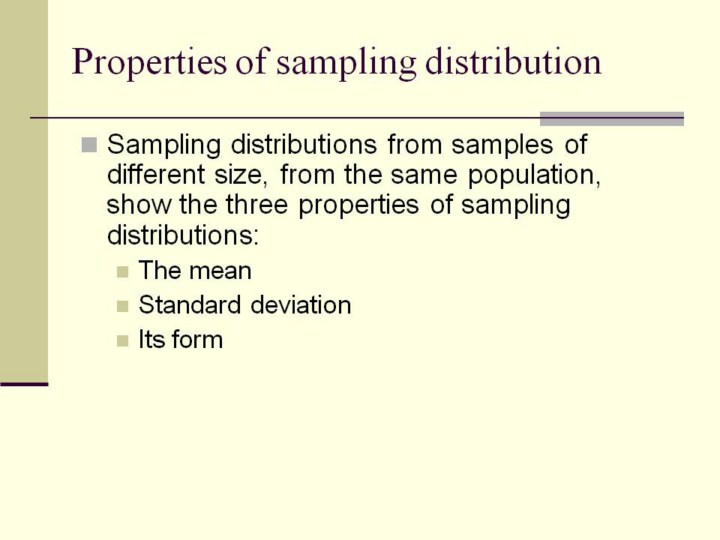 |
MEDIA
The average of a large number of estimates obtained from samples of
identical size is equal to the true value in the population.
Although estimates vary from individual samples, the average joint is always
equal to the population.
STANDARD
DEVIATION
The standard deviation of a sampling distribution, decrease if the sample
size increases. The standard deviation of a sampling distribution is called
standard error, ES. Remember that the standard deviation represents the
variability in individual data. The standard error represents the
variability in the estimates of the samples. The standard error is directly
dependent on the square root of sample size used.
For example, the ES of the distribution of estimates of the sample, p, the
proportion of the population is:
p (1-p)
ES (p) = ----------------
√ n
• This relationship between ES and √ n is shown to compare graphs with
different sample size, a smaller sample size larger ES, a larger sample
size, smaller ES.
FORM
The shape of the sampling distribution is approximately Normal when the
sample size is large.
This property is called the Central Limit Theorem. It is the most important
of the three properties. It said that when the sample size is large, the
distribution of estimates of the sample is always Normal.
This happens even if the distribution of the original data is not normal,
because by increasing the sample size approaches the normal distribution. |
